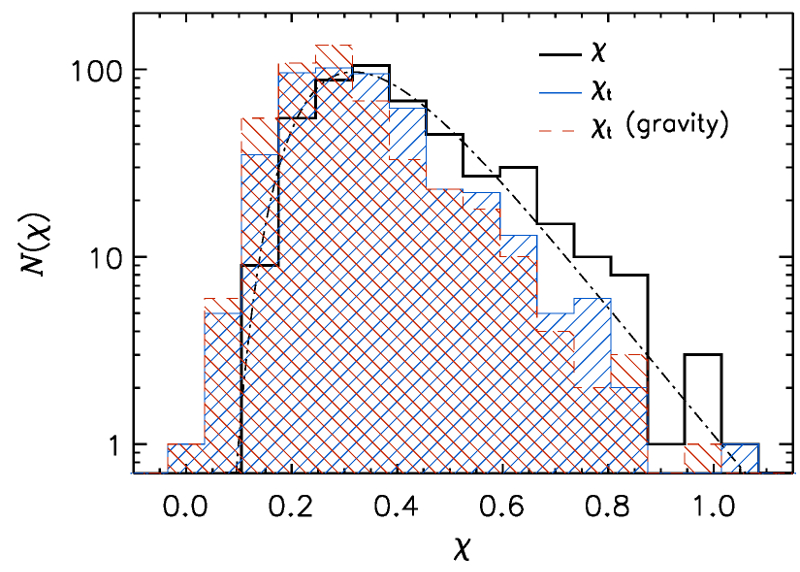| EPoS Contribution |
|
Compressibility and Density Fluctuations in Molecular-Cloud Turbulence
Liubin Pan CfA, Cambridge, US | |
| The compressibility of molecular cloud (MC) turbulence plays a crucial role in star formation models, as it controls the distribution of density fluctuations. The relation between the compressive ratio (the ratio of powers in compressive to solenoidal motions) and the statistics of turbulence has been studied systematically only in idealized simulations with random external forces. In our work, we analyze an MHD simulation of large-scale turbulence (250 pc) driven by supernova (SN) explosions that has been shown to yield MC properties consistent with observational results. We find that, with SN driving and accounting for gas heating and cooling, the turbulence in MCs is only mildly compressive, with the turbulent ratio of compressive to solenoidal powers ~0.3 on average, lower than the equilibrium value of 0.5 previously found in the inertial range of isothermal simulations with random solenoidal driving. We also show that the compressibility of the turbulence is not noticeably affected by gravity, nor is the mean cloud expansion or contraction velocity (suggesting that MCs do not collapse as a whole even if their own prestellar cores collapse to form stars). Furthermore, the clouds follow the same relation between the rms density and the rms turbulent velocity as in isothermal turbulence, and the gas density PDF averaged over all the clouds is described well by a lognormal distribution, with the addition of a high-density power-law tail when self-gravity is included. | |
 | |
| Caption: Probability distributions of the compressive to solenoidal power ratio over all molecular clouds selected in our simulation. The thick solid line shows the total compressive ratio (including the contribution from overall cloud expansion or contraction), while the shaded histograms plot the compressive to solenoidal ratio for turbulent motions only. The solid-line and dashed-line histograms are for clouds selected before and after the inclusion of gravity. The compressive ratio peaks at 0.3-0.4, smaller than the equilibrium value of 0.5. The dashed-dotted line shows a lognormal fit to the histograms. | |
| Collaborators: P. Padoan, Barcelona, ES T. Haugbolle, Copenhagen, DK A. Nordlund, Copenhagen, DK |
Key publication
Suggested Session: Turbulence |

